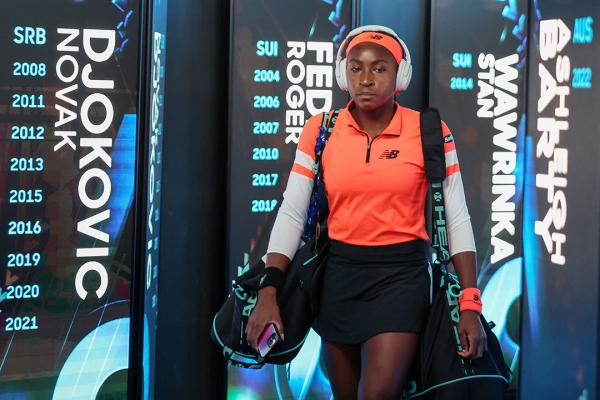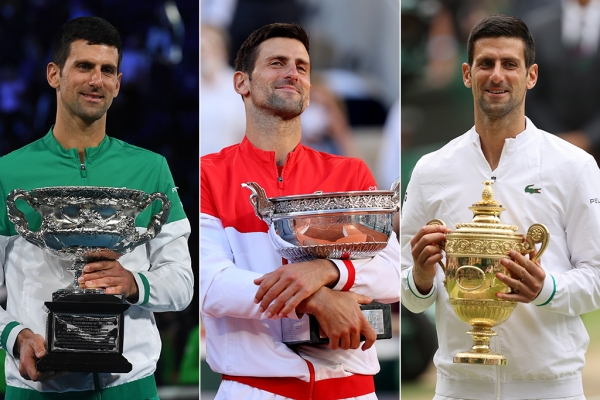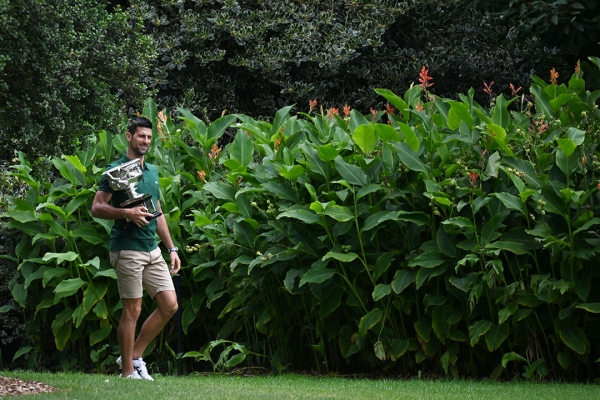The Australian Open has long prided itself on its ability to innovate.
On almost every conceivable metric, it has experimented, grown, evolved, reinvented itself and raised the bar for delivering one of the world’s best sporting and entertainment events.
RELATED: AO set for historic Sunday start
TICKETS: AO 2024 tickets on sale from 12 October
It’s a tournament now distinct and unique in many ways – central to the reason players love competing there, and fans love to attend.
The Australian Open indeed “hits different”, and here are seven reasons you need to come and experience how and why for yourselves.
A heart-pumping entrance
Does any tournament offer a more suspenseful and exciting entrance to its main arena?
Players competing at Rod Laver Arena enter the court via the ‘champions walk’, a long corridor lined with illuminated pillars with the names of former champions and their victorious years.
This can be a surreal experience for players as they visualise the giants of the game they are following onto this storied court.

Some even interact with the pillars of players they’re connected to. “It was special walking past Stefan Edberg's banner, the shield with his two wins. He's very inspirational, very important man in my career as a role model,” said Roger Federer, who tapped his former coach’s pillar when leaving the court after winning AO 2018.
Sebastian Korda does a similar thing when he passes the pillar of his father, 1998 champion Petr Korda. Victoria Azarenka, a champion in 2012 and 2013, tapped her own on one walk through the corridor.
This walk is also beamed onto the screens inside Rod Laver Arena, with fans watching as players approach – vision accompanied by the sound of a beating heart.
The anticipation builds brilliantly as players prepare to compete, and entertain, on one of the game’s grandest stages.
Epic finals
It’s fitting that the same court plays host to some of the sport’s most memorable Grand Slam finals.
Thrilling title matches are not unique to the Australian Open; the other majors have all seen classic deciders play out on their centre courts over the years.
But what is unique is how often Australian Open finals go the full distance.
This century, 18 AO singles finals – 12 women’s and six men’s – have required the full number of sets to decide the outcome, far more than any other Grand Slam in the same period.
From Novak Djokovic’s unforgettable five-set wins in 2012 and 2020, to Aryna Sabalenka’s majestic three-set win over Elena Rybakina this year, plus many more, Australian Open finals are an unmissable spectacle.
A Grand Slam quest begins
Australian Open victories take on an even greater significance beyond players claiming a coveted major title.
AO champions instantly become the only players capable of achieving the sport’s holy grail – a calendar-year Grand Slam.
This is a sweep of the sport’s four major singles titles – Australian Open, Roland Garros, Wimbledon and the US Open – in one season.
But it is only possible by winning the Australian Open first.

Australian Open 2015 champion Serena Williams came extremely close, winning the French and Wimbledon titles before falling in the US Open semifinals. AO 2021 winner Djokovic went even closer, going undefeated right through until an eventual loss in the US Open final.
Will the Australian Open 2024 champions go all the way?
It’s the ‘Happy Slam’
Given its position in the calendar, it is easy to see why Federer referred to the AO as the “Happy Slam” in 2007.
In January, players generally arrive at the AO fresh, healthy and invigorated after their off-seasons. There’s a sense of hope and opportunity in the air – a group of motivated athletes beginning their year with a clean slate. Many have escaped the Northern Hemisphere winter, experiencing instead the sunny, blue skies of an Australian summer.
RELATED: Australian summer of tennis calendar set for 2024
It’s an instant mood booster – and it’s reflected in the tennis they produce.
What’s more, the thousands of fans attending the Australian Open also enjoy the “Happy Slam” vibe. Many are enjoying their summer break – it’s also school holidays – and they lap up the action as it moves through sunny days into balmy nights.
Happy players, great tennis and engaged fans create an unforgettable atmosphere.
Aussie spirit
That atmosphere at Melbourne Park becomes especially electric when local players are in action.
The crowd at Rod Laver Arena has never been louder than at AO 2022, when Ash Barty became the first Australian to win a singles title at the tournament in 44 years.
“To get to experience to play at home is really special,” said Barty. “The energy was incredible.”
And who could forget Nick Kyrgios and Thanasi Kokkinakis’ title-winning run as doubles wildcards that same year? It made doubles the hottest ticket in town and helped the Special Ks reach stunning new heights.
“To see kind of the traction it's gotten and the energy it's gotten, and how much everyone is supporting, that's what we thrive off of,” Kokkinakis said.
HONOUR ROLLS: Australian Open champions
Another pair of Aussie wildcards, Rinky Hijikata and Jason Kubler, sparked a similar frenzy during their unexpected title-winning run at AO 2023.
“Having so many people behind you, it's hard not to get up for it,” Hijikata said. “It's hard not to kind of back yourself in the moment, really enjoy it. This is what you play for, being able to play a home Slam. There's nothing better.”
Unmatched location
Fans, players and media will all agree – the Australian Open is the most well-located of the four Grand Slams.
The fact an international sporting event is held so close to the centre of the city adds to the buzz of the event, and makes it so attractive to locals and internationals alike.
Djokovic, the tournament’s most profilic men’s singles champion, likes to spend his spare time in the city’s picturesque Royal Botanical Gardens, just across the Yarra River from Melbourne Park.

"I love the Botanical Gardens and I love nature and I love to spend time daily there if I can," Djokovic said.
"I have a friend there, a Brazilian fig tree, that I like to climb and I like to connect with, that's probably my favourite thing to do.”
Sports and entertainment combined
Earlier we mentioned the Australian Open’s reputation for innovation. And it’s in this space the tournament has distinguished itself as an iconic event.
Under the guidance of tournament director Craig Tiley, the AO has evolved from a tennis tournament into one of the world’s biggest sports and entertainment events.
The AO now puts on First Nations Day, All Abilities Day and Pride Day, stages the Glam Slam, features a Finals Festival, plus offers incredible food, bars, live music and partner activations – plenty of which can be enjoyed at the buzzing Grand Slam Oval.
And that’s all in addition to what will now be 15 days of thrilling Grand Slam tennis.